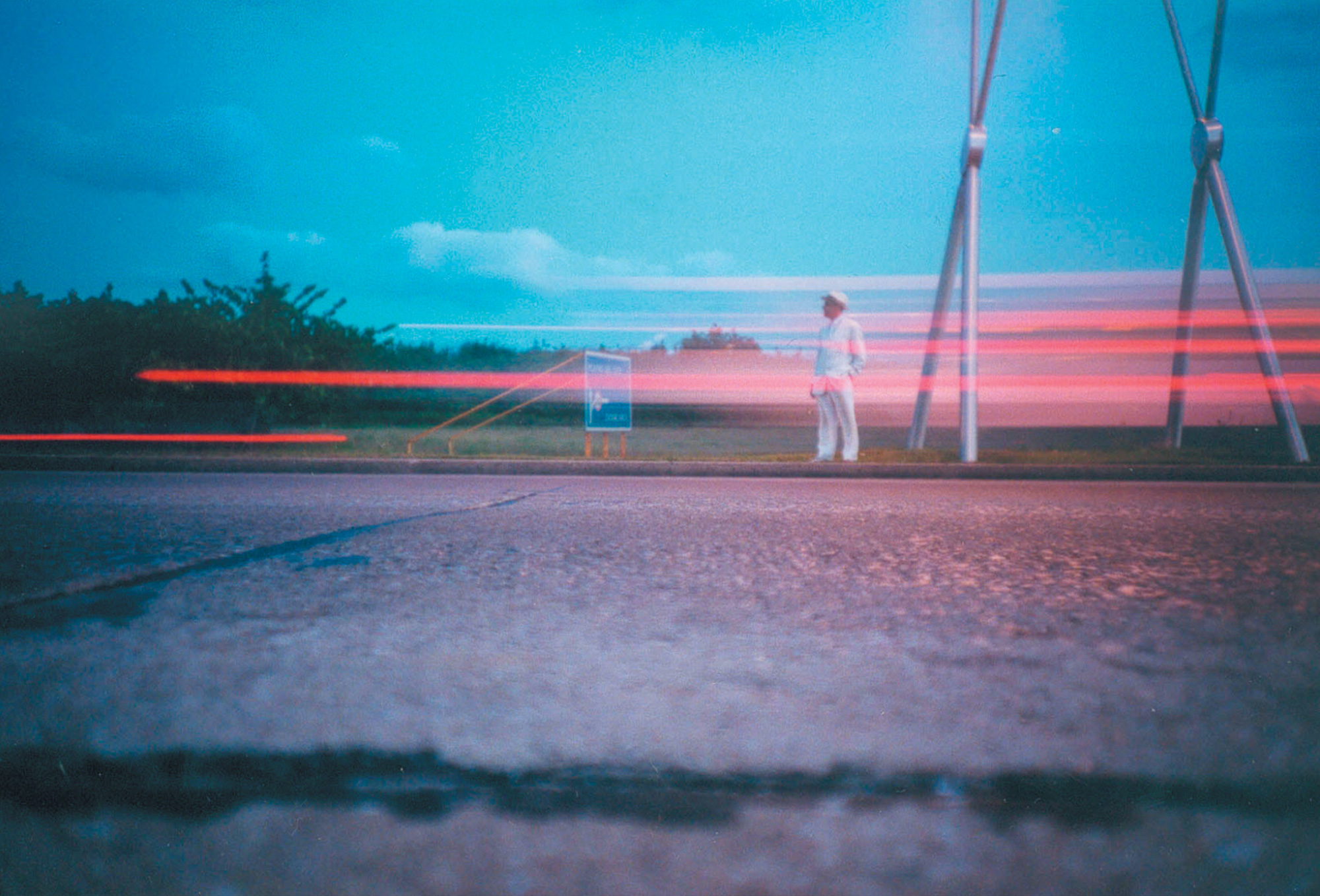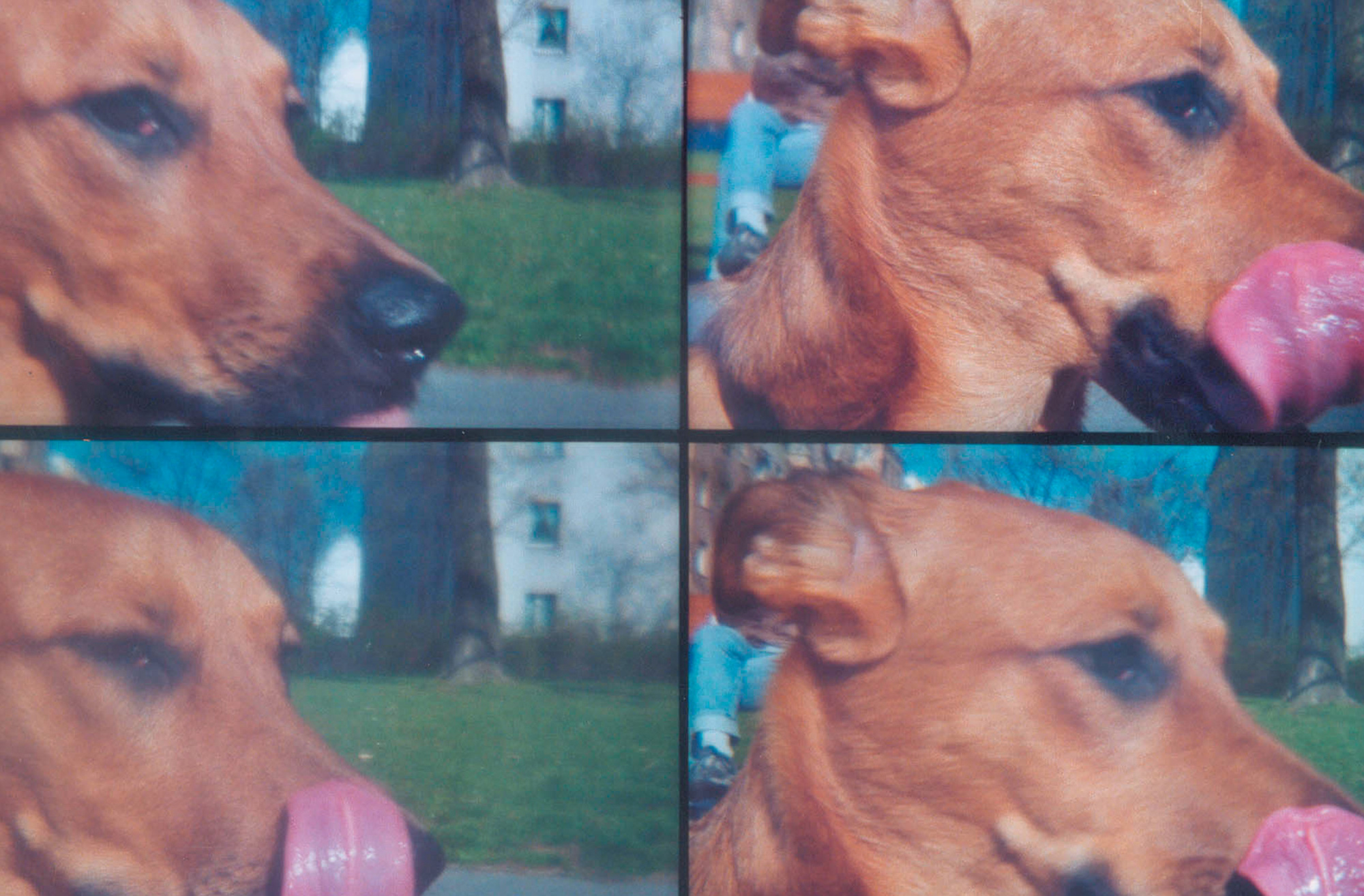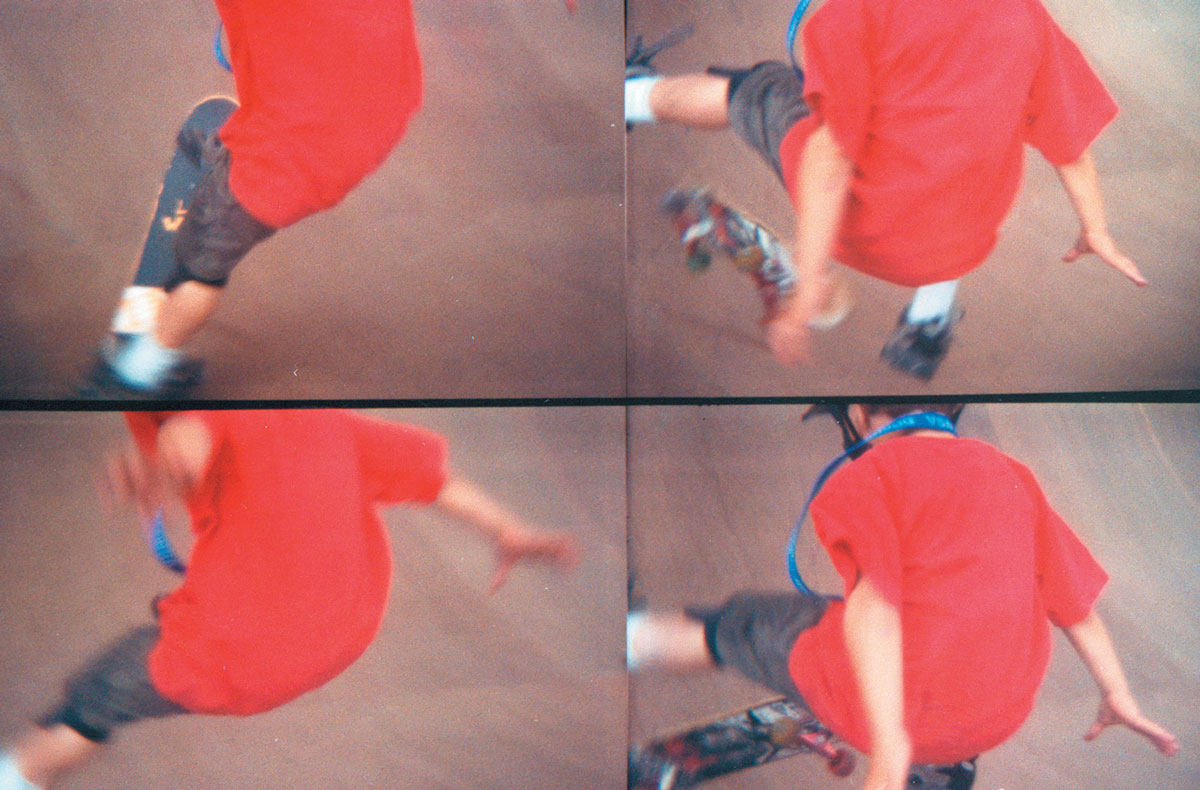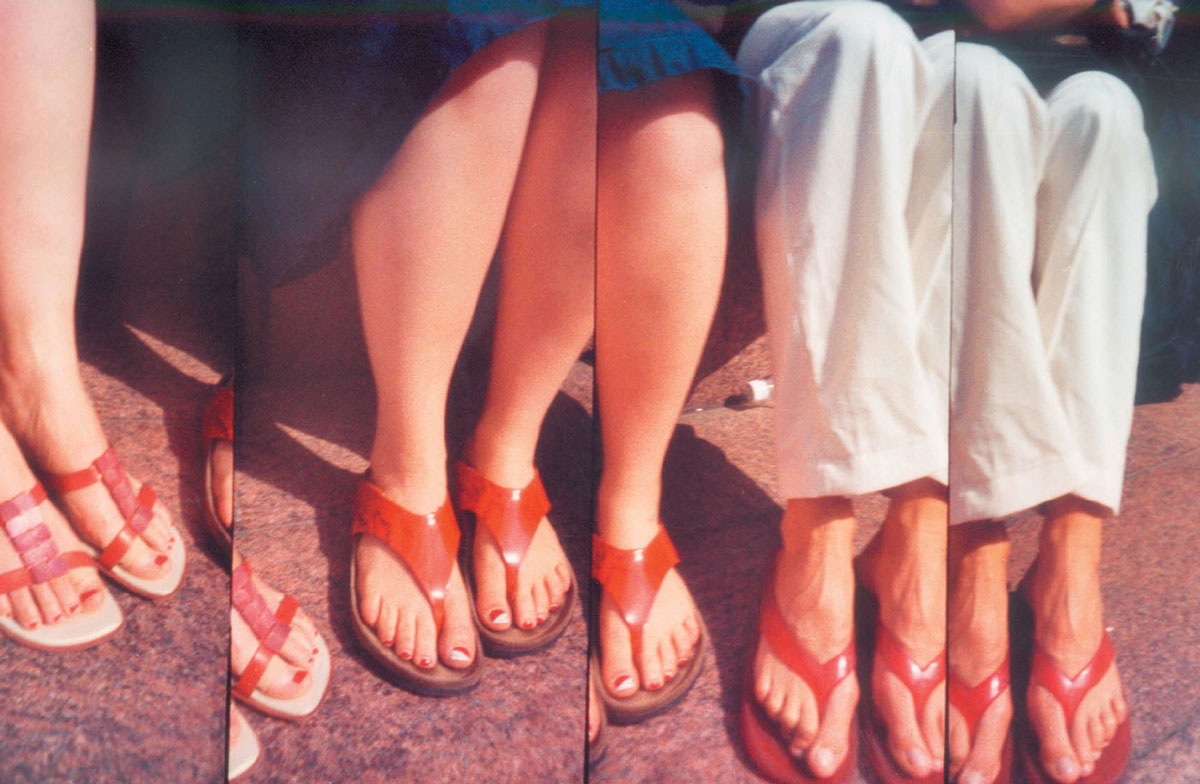The Logics of Deflation
The avant-garde, Lomography, and the fate of the photographic snapshot
John Roberts

The widespread recourse in contemporary art to the scrappy snapshot (and text), or the wall of abutted snapshots, is marked by a set of moves familiar from the use of photography in the 20th-century avant-garde: the derogation of aesthetic ideology in those forms where it most obviously and pervasively prevails. This is because photographic snapshots (both found or taken, on instamatics or 35mm cameras) are perhaps the quickest and most efficient means of deposing the traditional categories of art and the norms of artistic professionalism. Cheap, multiple, and spontaneous, the snapshot invests art with a non-artistic “ordinariness.” In the 1980s, with the improvement of machine printing, the inscription of the snapshot with this deaestheticizing “ordinariness” began to systematize itself as a post-conceptual move as artists began increasingly to exhibit the new higher-quality prints without framing or manipulation. Today, the cheap machine print is the ubiquitous form of the new neo-conceptual art. Indeed, the machine print snapshot is currently identified by artists as a kind of constitutive marker of avant-garde identity: the image that fails the test of aesthetic repleteness and creative “mastery.” The use of such photographs, then, has always been very much an issue of the ethics of form and artistic identity. In denying the customary pleasures of scale, complexity, and sensuousness of surface, the snapshot, in its various manifestations, reflects on the institutional functions of advanced art and on aesthetic ideology.

But today, crucially, the place where aesthetic ideology prevails is not where it has usually prevailed for much of the history of the avant-garde: the artisanal arts of painting. With the subsumption of the production and reception of art under new media, aesthetic ideology is now inscribed within the advanced technological relations of art. Contemporary art’s recourse to the photographic snapshot, then, is unprecedented. Its anti-aestheticism is based, not on a response to the institutional dominance of painting, but on the institutional dominance of photography, film, and video. It is unable, therefore, to follow the usual strategy of negation of aesthetic ideology pursued by many of the avant-gardes last century: the appropriation of the non-art or anti-art character of documentary photography as a way of removing art from the institutional power of the “aesthetizing gaze.” For in the light of the general incorporation of photography into the category of art, documentary practice itself has now become subject to the vast filmic transformation of the conditions of artistic production and reception. There has been a general convergence of interests between the ambitions of artists to transform the scale and mode of address of photography into that of the big-production modern technological image, and the systematization of the technological image on a vast, planetary scale. Thus, if the new filmic conditions of production have legitimatised a grand, staged, or composite photographic History Painting, as in Jeff Wall and Andreas Gursky, it has also produced an upscaling of the snapshot itself, as in the “transgressive” social realism of Nan Goldin, Richard Billingham, and Boris Mikhailov.[1] These latter visions of abjection, self-hate, sexual disclosure, and sub-criminality have shattered the boundaries between the public, appelative conventions of an older documentary photography and the illicit realms of pornography, the police archive, and mass cultural voyeurism generally. The result is that the negation of aesthetic ideology can no longer be performed so easily in the name of photography, as it was for almost 50 years through the years of the early Soviet and German avant-gardes up to Conceptual art. The photographic document as a source of illicit experiences is now thoroughly incorporated into the post-painting category of photography-as-art, photography-as-History Painting.

In this way, the ideological role of the snapshot in art in the 1990s has been essentially deflationary. That is, the snapshot doesn’t simply reverse or block photography’s institutional aspirations to the status of painting, but challenges the spectacularization and the reification of the advanced technological image as such. Accordingly, the casual and low-key use of the snapshot reinscribes one of the significant and unifying strategies of all 20th-century avant-gardes: the testing of art’s dominant modes of reception through various kinds of artistic deskilling or destabilization. This is why it is no surprise that the snapshot has come into its own again in the neo-conceptualism of the 1990s. For in the late 1980s and 1990s, photography has not only experienced a rapid ascendancy into the older category of History Painting, but the various strategies of deskilling identified with the photographic practices of an older avant-garde (desubjectivization, masquerade, repetition) have themselves become, under the auspices of postmodernism, part of a new critical academy. Postmodernism’s deconstruction of the author, identity, and representation may have unblocked some of the cultural prejudices and infirmities of Modernist theory, but it also presented the contemporary artist with the disabling specter of the academicization of photography itself as the museum opened its doors to the new postmodernist practices. The outcome is that a younger generation has had to reassess the photographic content of these strategies of deskilling in the wake of the fact that photography now finds itself inside the portals whose power it once criticized. The staged cibachrome and the upscaled snapshot, then, are only two aspects of the general assimilation of photography into the new museum. After conceptual art, after critical postmodernism, photography is now coextensive with the reinvention of the modern art institution itself. This is why the current use of the snapshot (be it singularly or as part of a combinatory aesthetic) is not simply a return to the anti-aesthetic informality of Conceptual art. It is a reengagement and repositioning of the snapshot’s deflationary logic in a system where the history of such strategies is now institutionally familiar and canonically anointed. The deflationary content of the contemporary snapshot is something, therefore, that is constituted, framed, and mediated by its own critical assimilation.

On this score the casual, anti-aesthetic use of the snapshot today demonstrates two related functions: on the one hand, it reinscribes an older, partisan view of photography as non-art and anti-art; and on the other, it reappropriates the snapshot’s familiar nonprofessional functions. It draws generally, therefore, on what historically has been one of the snapshot’s self-proclaimed demotic virtues: its intimacy and obdurate domesticity. Principally, the snapshot is a conversational form. In its connection to the “intersubjective” and the “diaristic’” and the “confessional,” it produces a performative intimacy with the political and cultural categories of the “everyday.” We should be wary, therefore, of overstating the discontinuity between the glossy upscaled snapshot and the aesthetically “evasive’” contemporary snapshot—despite the latter’s deflation of the former’s ambitions. The contemporary snapshot actually brings into new forms of critical alignment an aspect of the social function of the snapshot that the new “museum-assimilated” photography has tended to submerge, or turn over to a spectacularized narcissism: its “intra-familial sociability.”[2] And, of course, an important element of this is the use of the snapshot as a critical site of self-narration.

Since the late 1970s, cultural theory and the new art history have placed a significant emphasis on photographic self-representation as a means of dissolving repressive processes of socialization. Consequently, when the critique of representation in cultural studies and the new art history dovetailed with the feminist critique of representation in photographic theory in the 1980s, a generation of photographers who turned the camera on themselves did so on the basis of photography’s powers of subjective disclosure. Nan Goldin is one such photographer, Jo Spence is another. This in turn owed something to the incorporation, after the 1960s, of the photographic self-representation of the artist and his or her milieu into an expanded sense of portraiture, as in Andy Warhol and Bruce Nauman. In this way, scaling down the image, turning the camera on oneself or one one’s friends and colleagues, on the routines and scenes of everyday life, has constituted a familiar way for artists to retain their autonomy over their production and reconnect with both the familiar and non-conventionalized aspects of their immediate environment. The contemporary snapshot revisits these forms of self-representation and narration, but, significantly—and this is what extends its deflation of the aesthetic ambitions of the new high-end photography to a deflation of critical postmodernism proper—without the predetermining theoretical framework of the critique of identity and representation, and without the idea, as in the case of Warhol, of the snapshot acting as a kind of democratizing entry into the high-cultural domain of the artist. Today, rather, the art-snapshot tends to be dispersed into the art institution in order to claim a democratic convergence between the art-snapshot and the non-art snapshot, as in the work of Nobuyoshi Araki and other artists who have sought to dissolve the consumption of the domestically produced snapshot directly into the public space of the gallery. This is because the boundaries between professional artist, occasional artist, and non-artist have been perceived to have been eroded in the 1990s under the conjunction of post-conceptual aesthetics and popular access to new forms of visual technology. This has created an elision between “advanced aesthetics” and the aesthetics of the photographic amateur, and concomitantly a blurring between the “good photograph” (the result of extensive labor and editing in the darkroom) and the would-be “bad photograph” (the instantaneous photograph taken as a private love-token or momento mori). And this is why, I would argue, the deflationary content of the snapshot is functionally different in relation to the non-art and anti-art content of photography in so much contemporary art.

Whereas in the 1980s the use of the snapshot sought to displace the high-cultural assimilation of photography into art on the basis of pursuing photography in non-art contexts (as in Spence), the high-cultural deflation of art today is shaped by the mass democratizing function of the new visual technologies themselves: the producer of the snapshot in the gallery becomes coextensive with the producer of the snapshot outside of the gallery, and not simply the conduit through which the hierarchies of professional art practice are to be challenged or subverted. In this way the informality of the contemporary snapshot is evidence of a general ideological uncoupling of photography’s democratic content from the critical photographic programs within the professional domains of art; or rather, what has occurred is the transference of many of the critical impulses of these programs in the 1980s from the confines of art theory into the popular domain of photographic production itself. Indeed, if the place of the snapshot in the contemporary art world is characterized, in its reckoning with critical postmodernism, by its overwhelming withdrawal from the interventionist dictates and aims of content of the documentary tradition, this legacy of interventionism now finds a systematic and critical voice in the widespread popular embrace of a counter-archival notion of snapshot photography outside of the art world in the realm of the “amateur” proper, in the emergence of the Lomography phenomenon and Indymedia.

Lomography and Indymedia represent the current and significant mass form of the deflationary logic of the art-theoretical snapshot. Lomography is the generic and critical name given to photographs taken on the Russian instamatic camera the Lomo Kompakt Automatic. A well-thought-of but relatively obscure camera trading fitfully on the achievements of the old Soviet camera industry, the Lomo Kompakt was rediscovered by a group of young Vienna University students in the early 1990s. What distinguishes the camera is the high quality of the lens—for such an inexpensive camera—and the fact that the camera takes its snaps in quadruples, so on one print you can have four different views. Fired by the commitment to the camera, the students persuaded the company to allow them to be the sole distributors of the Lomo in Europe and North America. On the strength of this, the St. Petersburg-based company has expanded and is an unusual tale of post-communist market success. But most significantly, since the mid-1990s, particularly with the development of the Web, the camera has become the basis for an extraordinary proliferation of Lomo photo clubs and Lomo events on a global basis under the collective title of the Lomographic Society International. The LSI—the echoes of the Situationist International are not fortuitous—formulates various guidelines and procedures that each of the various Lomo organizations across the world host and develop. One of these is the A-Z City challenge, which involves would-be Lomographers turning up at a prearranged place in a major city and being handed, a roll of film, a map, and a list of 26 suggestions or challenges that they must follow as the basis for exploring and photographing the city. Another is the idea of designating a particular idea of theme that the Lomographers must pursue, for instance being asked to photograph all things red in a given city, as was the case in Singapore in September 2001, or being told to photograph blindfolded. The inventiveness and ambition of these “shooting scripts” depends very much on the local organizers and circumstances. However, what unites all these events is their competitive and festive character. After the shoots, usually lasting two days, but sometimes longer, all the Lomographers’ work is exhibited and then judged, with the best being identified as the work of “Lomolympic champions.” The exhibition and competition then, invariably, becomes a party and celebration of the Lomographic spirit.

These events, publicized and archived on the Web, provide an extraordinary reminder of the ethos of the early Workers’ Photography movement in the Soviet Union, the Weimar Republic, and Britain in the 1920s. Photography becomes, on the one hand, the basis for a mass social archiving, and on the other, a reflection on the relationship between photographic truth and who is standing behind the camera. But if Lomography embraces a popular politics of self-representation and the counter-archive, it is a popular politics without a determinate political context, or without direct reference to documentary traditions of dissent and resistance. The critical languages in evidence are either resolutely diffident or historically vague, as in the Ten Golden Rules of Lomography. 1) Take your LOMO with you wherever you go; 2) Use it all the time, at any time—day & night; 3) Lomography does not interfere with your life, it’s part of it; 4) Get as close as possible to the objects of your Lomographic desire; 5) don’t think; 6) be fast; 7) You don’t have to know what’s going to be captured on your film beforehand; 8) You don’t have to know what’s on the film afterwards either; 9) Shoot from the hip; 10) Don’t worry about rule 10. Or neo-Dadaist, as in the First International Lomoist Manifest (2002): “The Lomoist cultural conspiracy encourages plagiarism because plagiarism saves time and effort, improves results and shows initiative on the part of the individual plagiarist”. “We demand an end to culture, ethics and inwardness.” “We demand the abolition of capitalism at 3pm on next Sunday.”[3]

Clearly the Lomographic International is more than the sum of these parts. Those who participate in the organization obviously bring to it different commitments and interests, some of which will be critical of these proscriptions and guidelines. Yet the collected aperçus, manifestoes, and guidelines produce a certain philosophical and cultural tone, which is easily definable. Lomography conjoins the loucheness of Zen conceptualism (Yoko Ono) and the neo-Situationism of the Plagiarist art movement with the positivism of Mass Observation (“Lomography is everywhere”). In this way, Lomography’s refusal to name what Lomography might pick out as critical, yet at the same time encouraging the development of disciplinary guidelines within the framework of the representation of the “city life” invokes the unitary urbanism of the Situationists, but without the group’s incendiary notions of inversion, disruption and disturbance. On this basis, Lomography is, rather, an immersive urbanism. Its commitment to the snapshot as a mass form is primarily about networking and the collectivization of creativity, and not to a model of vanguard cultural intervention. In this sense, the loose collaborative ethos of Lomography could be seen as a cultural expression of what Michael Hardt and Toni Negri have called the “multitude”: the constituent democratic power of the collective.[4] As an inclusive political category—the mass that refuses its constitution in law—Hardt and Negri’s concept of the “multitude” is shot through with all kinds of indeterminacies and evasions, and gives away too much, despite the authors’ claims to the contrary, to conservative postmodern readings of class and identity. Nevertheless, what their notion provides, in fruitful ways, is an insight into how photographic technology is currently being used by a new generation of producers. For Lomography, photography is the space of the “multitude”: of multiple subjectivities, modes of attention, culturally strategies, but not because technology is ipso facto democratic, but because the ideals of Lomography enables some notional kind of collective control over the photographic apparatus. Lomography’s expression of the “multitude,” then—open participation without extended training—identifies possible new forms of cultural production with a democracy of intersubjective participation. Accordingly, the LSI links this democracy to view of itself as a continually expanding cadre of snapshot-photographers who, collectively and individually, bring the forms, practices, and subjectivities of the city “into view.” Significantly, then, Lomography’s deflationary logic is harnessed to a wider cultural dynamic: the production of “diffuse creativity” across cultural boundaries and competences.[5]

Lomography is one manifestation of the massive diffusion of cultural practices that have emerged since the mid-90s that owe nothing or little to the validations of the dominant symbolic economy of the art world. This is the result not only of the diffusion of cheap forms of technology but, more importantly, of the diffusion of cultural and critical competences outside of the confines and constraints of the art world and the art market. Over the last 20 years, thousands and thousands of occasional artists, some of who were once trained at art school and some of whom have learnt from those who trained there, continue to bring their symbolic skills and knowledge to bear on a wide range of activities that have no art world institutional location or art world exchange value. Most of these activities are temporal and have no life beyond their immediate conditions of production and display. Yet collectively these activities across many social locations and in many varied forms represent an increasing reflexive awareness of representation and artistic content outside of the professional institutions of art and, as such, provide an informal culture of artistic production that “non-artistic” producers participate in and learn from. Indeed, knowledge of the way the critical categories of art production have been dispersed into non-artistic locations has been barely addressed in current theoretical writing. Lomography (along with, for instance, the vast growth of new “home” music production) is representative of these subterranean changes within the political economy of culture.

This notion of the work of the “multitude” as a deflationary ideological force, is also reflected in the more politically focused phenomenon of Indymedia, or the Independent Media Center. Indeed, if the mass form of snapshot in Lomography is harnessed to various strategies of political indirection, in Indymedia the snapshot becomes the direct bearer of the notion of the counter-archive. Loosely linked to the current anti-globalization movement, Indymedia provides an on-line site for photographers, and in particular non-professional snapshot photographers, to post their images of events, activities, and demonstrations that the dominant media do not cover, or cover perfunctorily or antagonistically. In this regard, the site updates the many alternative news and picture agencies that developed in the 1980s. However, as a Web service, it obviously provides mass access and distribution in a way that the earlier organizations were unable to do by offering an efficient means of pooling images and information. “Indymedia is a collective of independent media organizations and hundreds of journalists offering grassroots, non-corporate coverage. Indymedia is a democratic media outlet for the creation of radical, accurate, and passionate tellings of truth.” “The Independent Media Center is [an] … organization committed to using media production as a tool for promoting social and economic justice.”[6] The language maybe slightly awkward and politically pragmatist, and the assumptions about truth-telling straight out of 1930s documentary positivism, but the contemporary implications for the photographic snapshot are clear enough: the snapshot is what links the agency of the “multitude” to the production of truth and the real. In this way, the Mass Observation tendencies of Lomography are put on a more overt political counter-archival footing. In submitting your snapshots of demonstrations and public events to the site, you are not only providing a platform for “other ways of telling,” but establishing the cultural validity of what you do as part of the “multitude.” In Lomography and Indymedia, there are no professional or amateur photographers as such, but, rather, photographers who take part in a collective, non-hierarchical productive process.

Yet the deflationary imperatives of the “amateur” do play a significant part in the self-identity of such organizations as the LSI and Indymedia. The attachment to a sense of the snapshot-photographer as unconstrained by any of the inhibitory professional notions of quality is crucial to the inclusive ideal of Indymedia. The Indymedia contributor is interpellated as the redoubt of low-tech, unschooled authenticity. Similarly, despite the central importance of the Internet in distributing the content of the LSI project, Lomographers celebrate the Lomo camera as an analogue technology, operating in the face of the centralizing cultural logic of the new digital technologies. “Digital reproduction is but the delusion of memory… come witness the fury of screw-up photography.”[7] In this way the use of a cheap, aging technology provides a democratic ethos for the avant-garde ideology of practiced failure or incompetence. Lomography’s democratic advocacy of the multitude over the singular is also the advocacy of the multitude as a space where mistakes are honored and value is self-created. Failure, or rather, the deliberate avoidance of given or prevailing standards and criteria of high-cultural artistic success, is taken to be a virtue. On this basis, the snapshot photographers of the LSI and contemporary snapshots-artists share a familiar and compact ideology: that the critique of value through photography is an emancipation from cultural division and hierarchy. This ideology is very seductive and has driven so much avant-garde art and popular photographic practices during the 20th century. Today, however, it is not so much photography as such that stands as a “placeholder” for the critique of value, but the photographic snapshot in particular. That is, in a culture where photography has become inscribed within the canon of modern art, the snapshot’s residual informality and cheapness is taken to be the primary generator of a “diffuse creativity.” But with the “multitude” of inclusivity and unburdened and productive failure, comes the unbridled “multitude” of the same. In the world of the snapshot, no image escapes its formal bond with all other snapshots. No image (ultimately) is better or worse than any other—to infinity. In this sense, both Lomography and much contemporary art provide a theory of counter-value in terms of the democratic proliferation of the same and the generic—although the impulses of one and the other are not exactly comparable. The art snapshot functions as a closing down or negation of aesthetic ideology in order to delimit notions of would-be real creativity, while the Lomographic snapshot functions as a closing down or negation of aesthetic ideology in order to identify and expand notions of creativity within these limits. Nevertheless, for both Lomography and contemporary art the reproducibility and simplicity of the snapshot becomes the sine qua non of the democratization of form through mechanical reproduction. In these terms it might be said that the dream of the Lomographer and the contemporary snapshot-artist is a world open to representation expanded to everyone, all the time. Indeed, by extension, at the heart of snapshot ideology is a utopian notion of the “amateur” photographer as a reflexive artist-in-waiting.

In this regard, the deflationary logic of the snapshot hides a genuine democratizing impulse, an impulse that continually reconfigures itself in art and culture as the return of the repressed. But under conditions where the critique of value is simply a placeholder for the critique of value, value easily becomes self-positivizing. There is no intrinsic virtue in the contingent and miniature itself. There is no intrinsic virtue in resisting the idea of quality in art as internal complexity. There is no intrinsic virtue in mass reproducibility itself. (Interestingly, one of the recurring heroic figures in Lomography literature is Herman Melville’s nay-sayer, Bartleby: “I would prefer not to.”) The snapshot, therefore, is always caught in a dilemma, whether allied to an anti-aesthetic inside the institutions of art, or to the dictates of some notion of mass cultural democracy. It is called on to disinvest the image of congealed aesthetic ideologies, but necessarily cannot escape its own limited naturalism as a critique of value. In this way the snapshot performs a spectral function within and outside contemporary art: it haunts the self-identity of aesthetic ideology without being able to provide a counter-aesthetic of its own. But paradoxically, it is because it cannot establish a counter-aesthetic of its own that it is able to continue to provide a critique of aesthetic ideology.

- This does not mean that the language of technologically advanced photography is necessarily uncritical of theories of auteurship; photographers such as Wall and Gursky are involved in a complex and collective division of labor, and this remains central to the view of themselves as critical practioners. The idea of themselves as collaborators is crucial to the ambitious scale and content of their work. But, this ambition, nonetheless, is not an unmediated “given” within the new institutions of art.
- Pierre Bourdieu, with Luc Boltanski, Robert Castel, Jean-Claude Chamboredon, Dominique Schnapper, Photography: A Middle Brow Art [Un art moyen, Les Éditions de Minuit,1965], trans. Shaun Whiteside (London: Polity Press 1990), p. 26.
- All quotes taken from www1.lomo.com/orbiz/DigiTrade/0001/index.html [link defunct—Eds.].
- Michael Hardt and Toni Negri, Empire, (Cambridge, Mass.: Harvard University Press, 2000). For Hardt and Negri the “multitude” is another name for the power which is immanent to all societies irrespective of their mode of production and forms of government. In other words, the “multitude” is a continuous and emergent principle of democratic diversity and negation.
- For a recent discussion of “diffuse creativity,” see Stephen Wright, “Le dés-oeuvrement de l’art’,” Mouvements (Les valeurs of de l’art: entre marché et institutions), no. 17, September/October 2001.
- See www.indymedia.org.
- www1.lomo.com/orbiz/DigiTrade/0001/index.html [link defunct—Eds.].
John Roberts is the author of The Art of Interruption: Realism, Photography and the Everyday (St. Martin’s Press, 1998) and a regular contributor to Cabinet. His most recent book (co-authored with Dave Beech) is The Philistine Controversy (Verso 2002).
Spotted an error? Email us at corrections at cabinetmagazine dot org.
If you’ve enjoyed the free articles that we offer on our site, please consider subscribing to our nonprofit magazine. You get twelve online issues and unlimited access to all our archives.